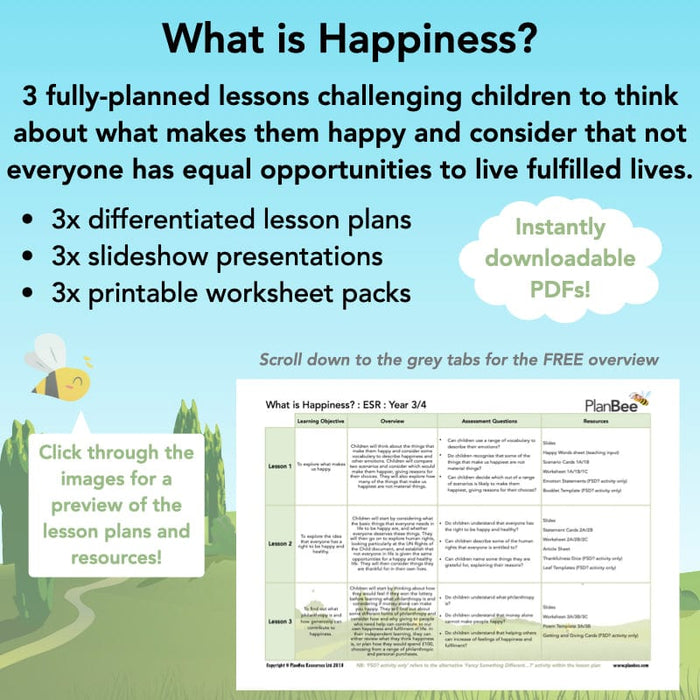
What is Happiness?
Challenge your children to define what happiness is and identify the things in their lives that make them happy with this ‘What is Happiness?’ scheme of work for Year 3/4.

Challenge your children to define what happiness is and identify the things in their lives that make them happy with this ‘What is Happiness?’ scheme of work for Year 3/4.
With plenty of thought-provoking questions, your children will consider the value of material vs non-material things in terms of their happiness, start to understand human rights and get an understanding that not everyone has equal opportunities to live fulfilled and healthy lives, and examine the concept of philanthropy.
Including lesson plans, engaging slideshows for the teaching input, differentiated activities and a range of printable resources, this ‘What is Happiness?’ scheme of work is a simple way to encourage your class to live more fulfilling, happy lives.
The first lesson in this series challenges your class to think about the things that make them happy and consider some vocabulary to describe happiness and other emotions. Children will consider and compare a variety of scenarios and consider which would make them happiest, giving reasons for their choices. They will also explore how many of the things that make us happiest are not material things.
This downloadable lesson includes a lesson plan, a slideshow presentation and printable teaching resources.
Children will start this lesson by considering what the basic things that everyone needs in life to be happy are, and whether everyone deserves these things. They will then go on to explore human rights, looking particularly at the UN Rights of the Child document, and establish that not everyone in life is given the same opportunities for a happy and healthy life. They will then consider things they are thankful for in their own lives.
This downloadable ESR lesson includes a lesson plan, slideshow presentation and printable teaching resources.
The third lesson in this short series considers the concept of philanthropy and encourages your class to identify that money alone cannot make people live fulfilled lives. Children will explore a variety of forms of philanthropy and consider how and why giving to people who need help can contribute to our own happiness and fulfilment in life. In their independent learning, they can either review what they think happiness is, or plan how they would spend £100, choosing from a range of philanthropic and personal purchases.
This downloadable ESR lesson includes a lesson plan, slideshow presentation and printable teaching resources.
Download a free overview to support your teaching of this scheme of work.